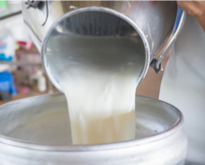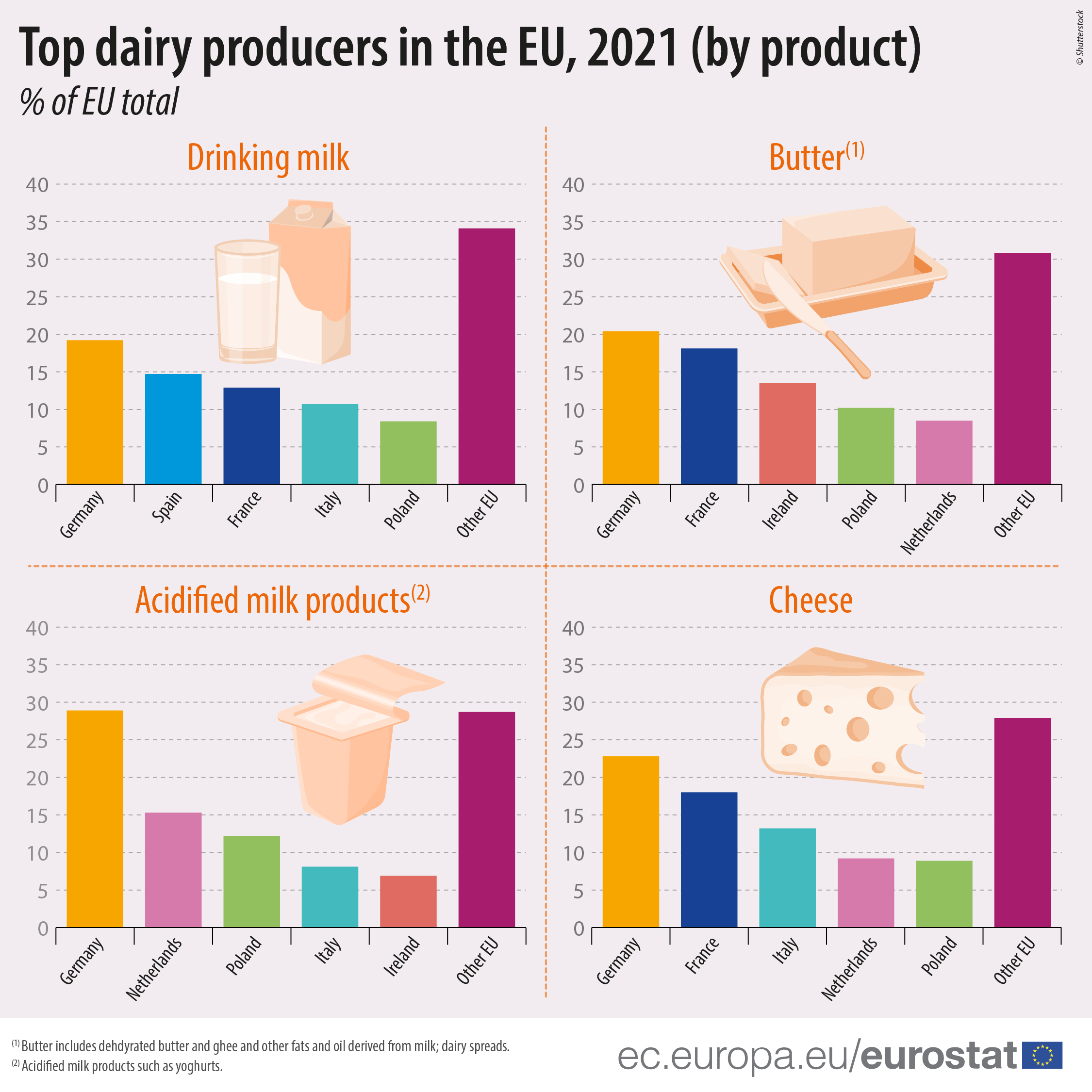EU farms produced an estimated 161.0 million tonnes of raw milk in 2021, which would represent a year-on-year increase of 0.7 million tonnes. This stability in production (+0.4% compared with 2020) was underpinned by higher production on farms in Italy (+4%) and Ireland (+6%) but declines in Germany, France and the Netherlands (all -2%).
The vast majority of raw milk (150.7 million tonnes) was delivered to dairies, the rest being used directly on farms. It was used to produce a range of fresh and manufactured dairy products.
This information comes from data on milk and milk products published by Eurostat today. The article presents a handful of findings from the more detailed Statistics Explained article on milk and milk products.
Among other products, dairies produced 2.3 million tonnes of butter and so-called ‘yellow products’ from 44.4 million tonnes of whole milk; 10.4 million tonnes of cheese from 61.4 million tonnes of whole milk and 16.4 million tonnes of skimmed milk; and 23.2 million tonnes of drinking milk from 13.0 million tonnes of whole milk and 10.0 million tonnes of skimmed milk.
Source dataset: apro_mk_pobta (EU aggregates estimated for this release)
Germany produced more of the EU’s drinking milk (19% of the EU total), butter (20%), acidified milk products like yoghurts (29%) and cheese (23%) than any other Member State.
Germany, together with Spain (15% of the EU total), France (13%), Italy (11 %) and Poland (8%) accounted for about two thirds of the drinking milk produced in the EU in 2021. Some other Member States were key producers of other fresh and manufactured dairy products: the Netherlands was the second largest producer of acidified milk products in the EU (15% of the total) and fourth largest of cheese (9%), while Ireland was the third largest producer of butter (14% of the EU total) and fifth largest of acidified milk products (7%).
For more information:
- Statistics Explained article on milk and milk products
- Dedicated section on agriculture statistics
- Database on agriculture statistics
Methodological notes:
- Dairy products are recorded in terms of their weight. It is thus difficult to compare the quantities of various products (for example, tonnes of fresh milk and of milk powder). The volume of whole or skimmed milk used in dairy processes provides more comparable figures. Two dimensions (quantities of whole and skimmed milk used) reflect the material balance of the valuable milk components, especially fat (in whole milk only) and protein (in total milk used).
To contact us, please visit our User Support page.
For press queries, please contact our Media Support.


